Top 10 Wildlife Encounters on an Alaska Cruise

Imagine a cruise to Alaska, and many things probably spring to mind: massive blue glaciers, colorful Native American totem poles, snow-capped mountains shrouded with mist. But for many cruisers, there's one Alaskan sight that rules them all: wildlife.
From eagles and seabirds soaring overhead, to pods of whales and other "charismatic" marine life below, wildlife literally surrounds you from all sides in the 49th State. See the checklist below of 10 amazing animals to seek out on an Alaska cruise.
You might notice that we don't mention one of Alaska's best-known animals, the moose. That's because you're unlikely to see one in the Inside Passage. If moose are high on your must-see list, consider adding a Denali land excursion to the beginning or end of your trip.
On This Page
Mountain Goats
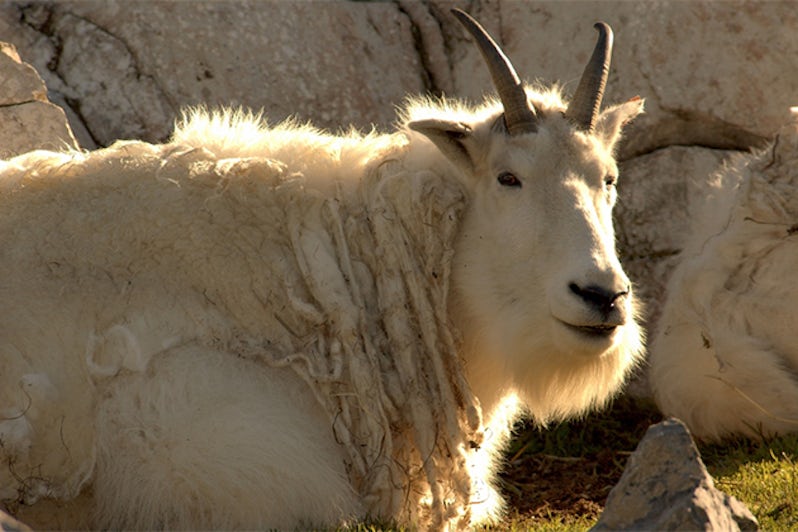
You've got to have strong binoculars (or strong legs!) to get a close look at these shaggy beasts, which spend their lives precariously perched on high, craggy cliffsides. The lone mountain goat sighting on our cruise came as we made our way up Glacier Bay, where an eagle-eyed naturalist from the expedition staff pointed out a couple of small white dots moving across a gray cliff. Through binoculars and the ship's viewing telescope, we could make out a nanny goat and her kid foraging on the sparse grass. Besides Glacier Bay National Park, mountain goats can be found throughout Southeast Alaska, including Ketchikan, Juneau and Skagway.
Sea Otters
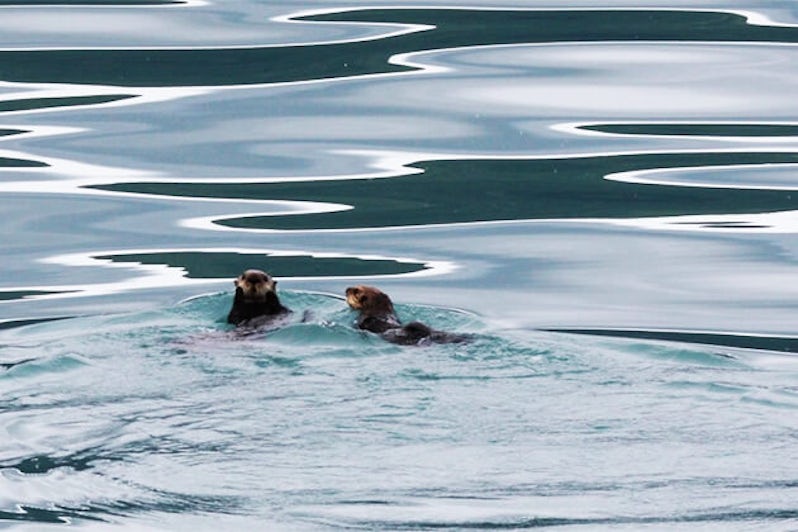
If all you can see sticking out of the water is an inquisitive, whiskered face at one end and furry brown feet at the other, you've probably spotted a sea otter. These cuddly-looking sea mammals swim mostly on their backs, using rocks to break open shellfish on their bellies. We saw about a dozen otters near the Inian Islands, including a mother cradling a baby on her chest. (The Inians are wedged between Glacier Bay National Park and northern Chichagof Island in the waters of Icy Strait.)
It's fun to watch the otters tumbling in the water and using their paws to groom themselves, which they do frequently -- they've got no blubber, so they rely on their luxuriantly thick fur to keep them warm. You can spot otters in shallow coastal waters throughout Southeast Alaska.
Puffins
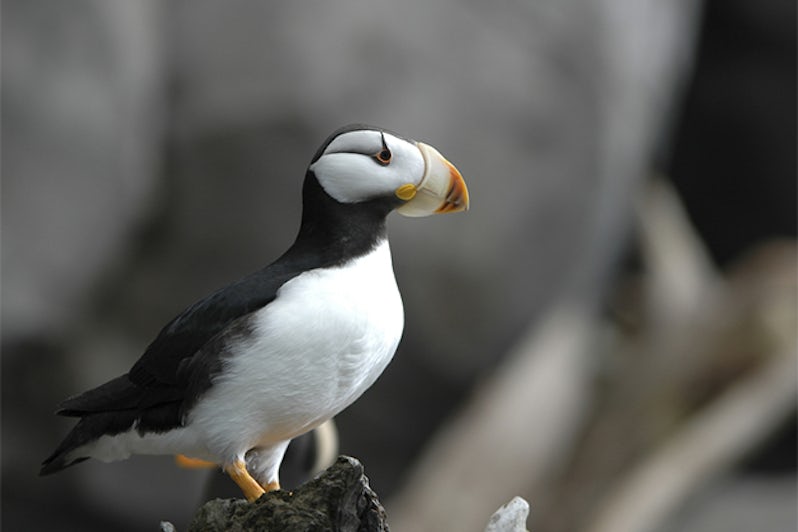
With their distinctive colorful beaks, puffins are one of the most easily recognizable sea birds in Southeast Alaska. As sea birds, they are much more comfortable in the water than in the air; we had to laugh as we watched the struggle of one bird as it attempted to take flight from the water, powered by a frenzied flapping of wings and churning of feet.
Avid birdwatchers should bring their binoculars to the protected islands of Glacier Bay National Park, which provide a summer nesting ground for both tufted and horned puffins, along with other local seabirds, such as glaucous-winged gulls, pigeon guillemots and oystercatchers.
Steller Sea Lions
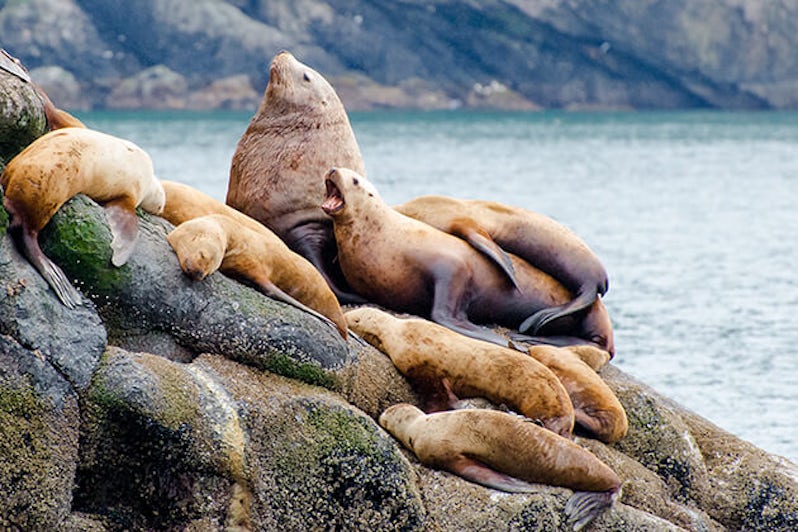
As our Zodiac zipped through the waters of the Inian Islands, we heard the colony of Steller sea lions before we saw them. This is not the friendly, high-pitched barking noise we'd heard from California sea lions -- imagine a cross between a mooing cow, a grunting pig and a croaking bullfrog, and you'll come close.
Stellers are larger than their Californian cousins, with the massive, barrel-chested males weighing more than a ton. Although their numbers are declining in other parts of the Pacific, they're plentiful in Southeast Alaska -- we saw them not only in the Inians but also on a buoy outside the fishing village of Petersburg and on Glacier Bay's South Marble Island, a popular gathering point for nearly 500 of these magnificent animals.
Killer Whales/Orcas
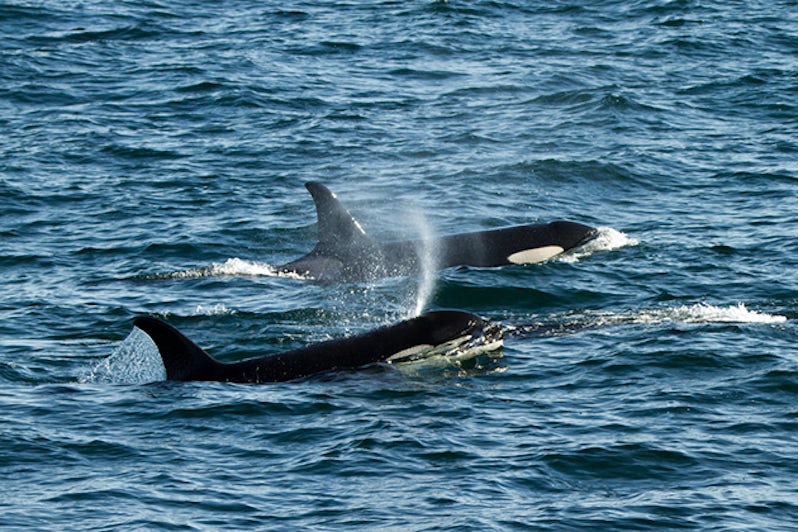
The wakeup call came an hour earlier than usual, at 6 a.m. "We've been following a pod of orcas for 40 minutes," announced our expedition leader. Those of us willing to drag ourselves out of bed at that hour were rewarded with the only orca sighting of the trip: about half a dozen of the black-and-white creatures surfaced so close to the ship that we didn't even need binoculars.
Despite their name, orcas technically aren't whales -- they're the largest members of the dolphin and porpoise family. They roam in pods throughout the cool, nutrient-rich waters of Southeast Alaska, but are less prevalent -- and thus harder to spot -- than the more common humpback whales.
Harbor Seals
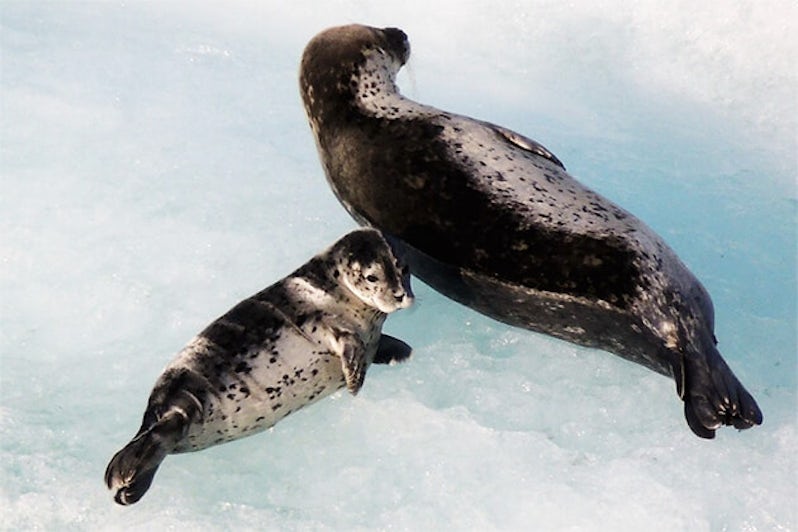
The most common response to harbor seals spotted on our expedition was a resounding "Aww!" Our early-June sailing fell during the spring pupping season, so we saw quite a few mama seals lying on the ice beside their babies, like so many fat brown sausages.
Harbor seals swim into glacial fjords like Tracy Arm and Glacier Bay each year for pupping, using the icebergs that break off of the receding glaciers to give birth. Though cruise ships must keep their distance to avoid disturbing the new pups, we enjoyed a few close encounters with swimming adult seals, who popped their heads out of the water to cast a curious glance at our Zodiac, as though wondering who these strange two-legged creatures might be.
Bald Eagles

After a week in Alaska, you might wonder why bald eagles were ever on the U.S. endangered species list. There are an estimated 30,000 bald eagles throughout the state, and we spotted at least one every day -- soaring overhead, swooping down to pluck a fish from the water or surveying their surroundings from large nests in trees along the shoreline.
Though the bald eagle population in Alaska is much healthier than it used to be, these large birds still face threats, mostly from humans. The Alaska Raptor Center in Sitka, which sees many cruise ship visitors, treats eagles and other birds who have been hit by cars, flown into power lines or been otherwise injured.
Salmon

Our June Alaska expedition was too early in the season for us to see any salmon -- well, except the ones that appeared on our plates at dinnertime! Schedule your cruise sometime between late July and early September for the best chance to see salmon feverishly launching themselves upstream (as well as the brown bears and bald eagles that feed on them).
Bears
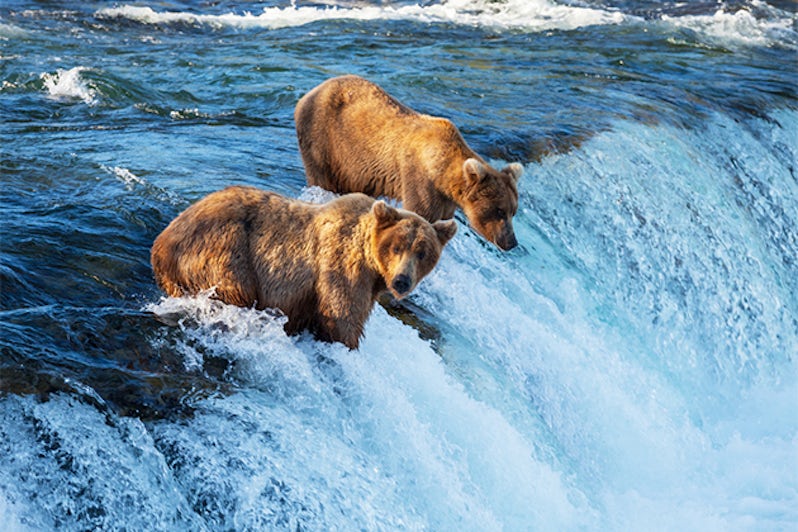
There are two types of bears native to Southeast Alaska: brown and black. (Or three, if you count the all-too-common "rock bear" -- that large round lump on the shoreline that has you gesturing excitedly until you peep through your binoculars and realize that, alas, it's just another boulder.) While bears are a coveted sighting on any Alaska cruise, they're most safely spotted from the water or a protected viewing area in a preserve.
On our expedition, we always hiked in "bear-safe" groups of five or more people and made plenty of noise when entering the forest so we didn't stumble accidentally upon any furry predators. Bears are commonly spotted along the shoreline throughout the spring and summer, but to watch them feed at salmon streams, time your cruise for later in the season (late July through early September).
Humpback Whales

"Look, there's a blow!" Out streamed the passengers onto the observation deck. Up went the binoculars. Click-click-click went the cameras. We spent many hours of our cruise watching avidly for those trademark humps to breach the surface, followed by the flukes sliding gracefully back into the sea.
Of all the "charismatic mega-fauna" we saw in Alaska (to use our expedition leader's term), the humpback whale was perhaps the most anticipated -- and, happily, one of the easiest to spot. More than 500 humpbacks spend their summers in the waters of the Inside Passage, bulking up before their winter migration to the tropics (where food is scarce). When watching humpback whales, pay attention to the pattern on each fluke -- like fingerprints on humans, each one is distinct.